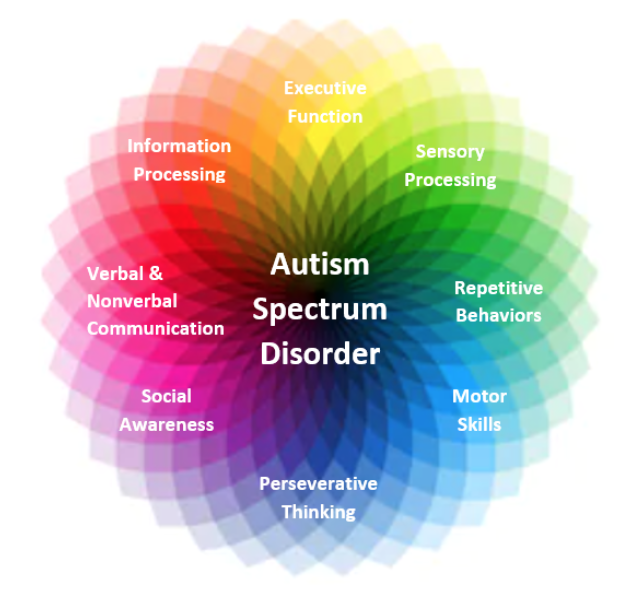It is important to realise that each child with autism is different from the next so the descriptions in this information sheet should only be taken as a general guide. Nevertheless, the common problems affecting social interaction, communication and imagination and the repetitive behaviour are common to all.
Signs of autism
Children with autism exhibit a wide range of behaviours. Essentially though, the child will have difficulty relating to others and making friends; difficulty in communicating (some children may not talk at all); and be unable to engage in imaginative play. Other signs include obsessions, fears, a lack of awareness of danger, ritualistic play and behaviour, inappropriate eye contact, hypersensitivity to sound, light etc., spinning objects and hand flapping. A child does not need to show all these signs to be diagnosed as autistic and some children who do not have autism may exhibit some of these behaviours.
Communication
Some children never develop spoken language and their understanding may be limited. Others develop speech although this may begin much later than normal. Some of these children will develop echolalia – repeating words that may have little meaning for the child or repeating what you say. For example, when asking a child if he wants a drink, he may reply ‘Do you want a drink?’ The child may also use the words ‘Do you want a drink?’ to actually ask for a drink. He may also repeat words or phrases that he has heard in the past – including phrases from television programmes. For those children whose language develops beyond echolalia, they may have great difficulty with grammar and word meanings.
Non-verbal communication is also impaired. Young children may even have difficulty in understanding simple gestures such as nodding and shaking the head. They also have great difficulty in using such language, although they often develop simple skills as they grow older. The basic rule is to be clear, concise and consistent.
Definition of Autistic Spectrum Disorder preferred by The Key School is reprinted from the DSM-5™ Diagnostic Criteria.
Autism Spectrum Disorder:
A. Persistent deficits in social communication and social interaction across multiple contexts, as manifested by the following, currently or by history (examples are illustrative, not exhaustive;
1. Deficits in social-emotional reciprocity, ranging, for example, from abnormal social approach and failure of normal back-and-forth conversation; to reduced sharing of interests, emotions, or affect; to failure to initiate or respond to social interactions.
2. Deficits in nonverbal communicative behaviours used for social interaction, ranging, for example, from poorly integrated verbal and nonverbal communication; to abnormalities in eye contact and body language or deficits in understanding and use of gestures; to a total lack of facial expressions and nonverbal communication.
3. Deficits in developing, maintaining, and understanding relationships, ranging, for example, from difficulties adjusting behaviour to suit various social contexts; to difficulties in sharing imaginative play or in making friends; to absence of interest in peers.
Specify current severity:
Severity is based on social communication impairments and restricted, repetitive patterns of behaviour:
B. Restricted, repetitive patterns of behaviour, interests, or activities, as manifested by at least two of the following, currently or by history (examples are illustrative, not exhaustive; see text):
1. Stereotyped or repetitive motor movements, use of objects, or speech (e.g., simple motor stereotypes, lining up toys or flipping objects, echolalia, idiosyncratic phrases).
2. Insistence on sameness, inflexible adherence to routines, or ritualized patterns of verbal or nonverbal behaviour (e.g., extreme distress at small changes, difficulties with transitions, rigid thinking patterns, greeting rituals, need to take same route or eat same food every day).
3. Highly restricted, fixated interests that are abnormal in intensity or focus (e.g., strong attachment to or preoccupation with unusual objects, excessively circumscribed or perseverative interests).
4. Hyper- or hyporeactivity to sensory input or unusual interest in sensory aspects of the environment (e.g., apparent indifference to pain/temperature, adverse response to specific sounds or textures, excessive smelling or touching of objects, visual fascination with lights or movement).


Recent Comments